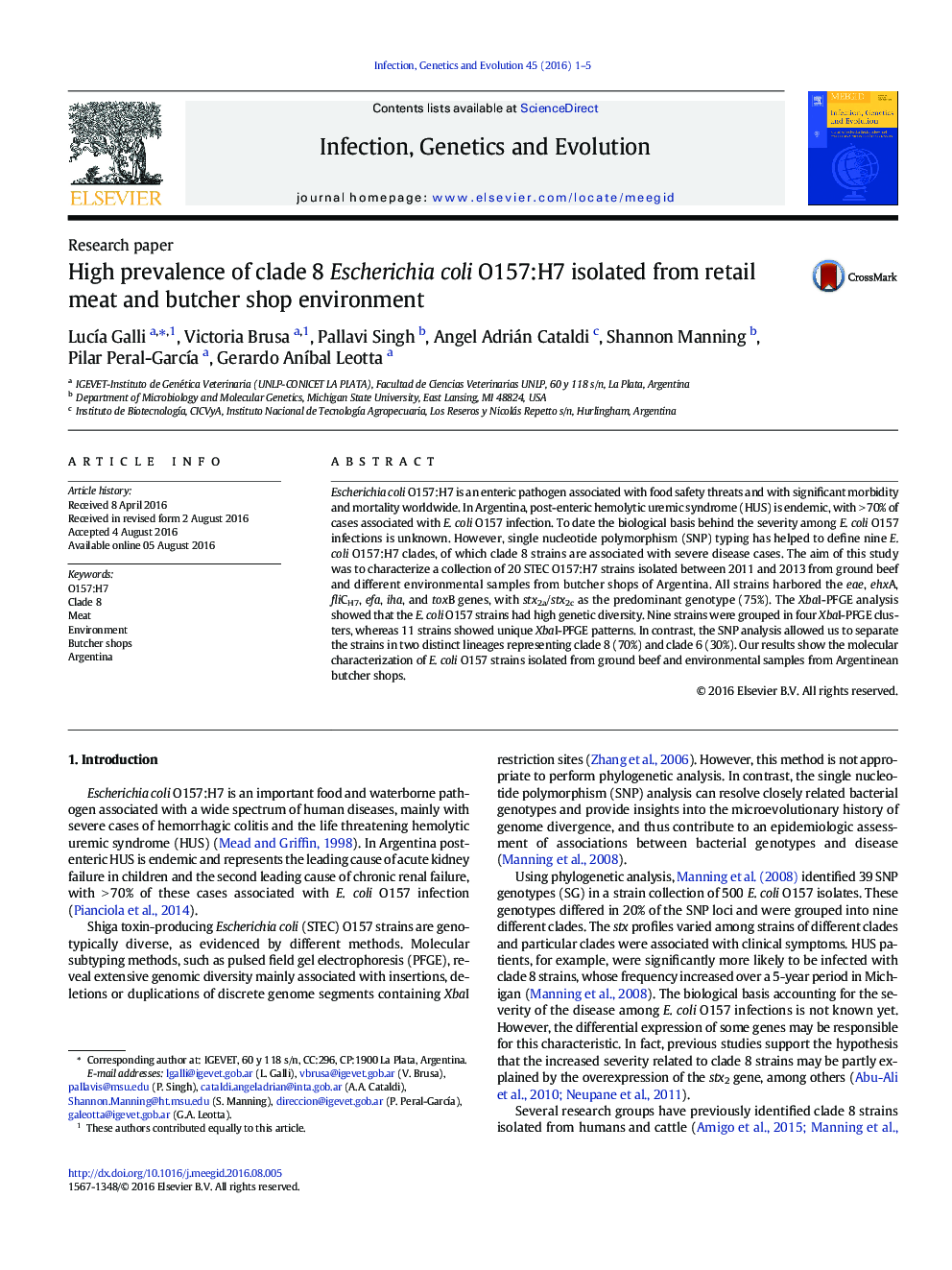| Article ID | Journal | Published Year | Pages | File Type |
|---|---|---|---|---|
| 2822849 | Infection, Genetics and Evolution | 2016 | 5 Pages |
•Characterization of O157:H7 strains from beef and environment from butcher shops•PFGE analysis showed high genetic diversity than SNP.•SNP analysis separated the strains in two distinct lineages 8 and 6.•The almost exclusive circulation of clade 8 strains in the type of samples analyzed.•Not suitable to reduce the pathogenic potential of strains only to the clade type
Escherichia coli O157:H7 is an enteric pathogen associated with food safety threats and with significant morbidity and mortality worldwide. In Argentina, post-enteric hemolytic uremic syndrome (HUS) is endemic, with > 70% of cases associated with E. coli O157 infection. To date the biological basis behind the severity among E. coli O157 infections is unknown. However, single nucleotide polymorphism (SNP) typing has helped to define nine E. coli O157:H7 clades, of which clade 8 strains are associated with severe disease cases. The aim of this study was to characterize a collection of 20 STEC O157:H7 strains isolated between 2011 and 2013 from ground beef and different environmental samples from butcher shops of Argentina. All strains harbored the eae, ehxA, fliCH7, efa, iha, and toxB genes, with stx2a/stx2c as the predominant genotype (75%). The XbaI-PFGE analysis showed that the E. coli O157 strains had high genetic diversity. Nine strains were grouped in four XbaI-PFGE clusters, whereas 11 strains showed unique XbaI-PFGE patterns. In contrast, the SNP analysis allowed us to separate the strains in two distinct lineages representing clade 8 (70%) and clade 6 (30%). Our results show the molecular characterization of E. coli O157 strains isolated from ground beef and environmental samples from Argentinean butcher shops.
